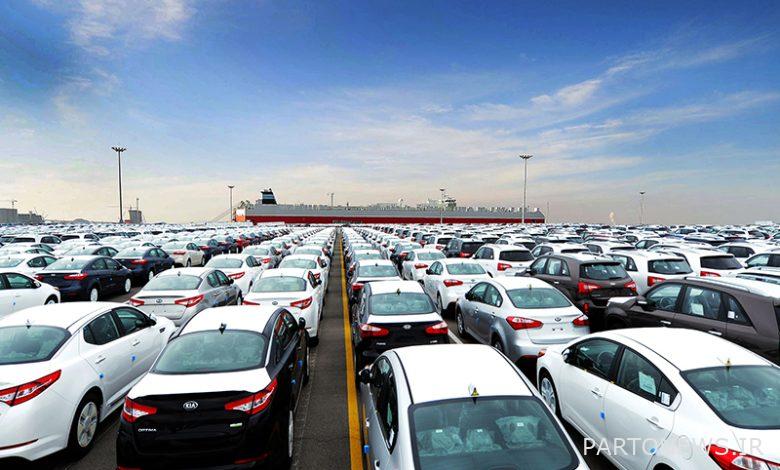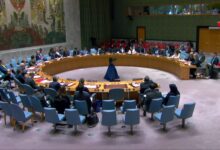New plan to liberalize car imports

According to Tejarat News, the MPs set two new goals to liberalize car imports. Earlier, the parliament approved the liberalization plan with the aim of regulating the car market. Now that the Industries Commission is working on resolving the Guardian Council’s objections to the plan, some lawmakers are proposing a secondary plan to import cars to finance the metro and meet the government’s budget deficit.
Minister Samat has asked the members of the Parliamentary Committee on Industries and Mines to postpone the plan to liberalize car imports for a year, but the Industries Commission has put the review of this plan on its weekly agenda in the presence of Minister Samat and other automotive stakeholders.
According to the plan announced today, the members of this commission are scheduled to review the plan to reorganize the automotive industry (restored by the Guardian Council) in the presence of Seyed Reza Fatemi Amin, Minister of Silence and officials of relevant executive bodies, experts from the Research Center and Iran Chamber.
Thus, it seems that despite Fatemi Amin’s opposition to the import liberalization plan and the opposition of the beneficiaries to the ban on foreign cars and pressure on the members of this commission, the liberalization plan is still on the agenda of the deputies.
Although some credible sources recently stated that some extra-parliamentary institutions dissuaded lawmakers from pursuing the plan, claiming that import liberalization was at odds with the resistance economy, members of the Industries and Mines Commission appear to be vigorously seeking a solution. The shortcomings of Article 4 of the amendment to the car reorganization plan are returned by the Guardian Council.
But in addition to the meetings of the Industries and Mines Commission to address the problems of the Guardian Council, the Program, Budget and Accounts Commission also has a special plan to lift the ban on car imports into the country.
Of course, the commission’s view is to liberalize earlier imports to address the government’s budget deficit. In this regard, yesterday, Seyed Mohammad Reza Mirtaja al-Dini, Deputy Chairman of the Program, Budget and Accounts Committee of the parliament, in an interview with the House of Nation, referring to the collection of signatures for a plan called car import without currency transfer by some deputies, said that according to this plan Iranians Residents abroad or Iranians with deposits abroad pay a certain amount to the government for importing each car.
He added that for the import of each foreign car, between two to four billion tomans of customs duty has been considered, in this plan, all considerations and aspects have been considered, and this import aims to create competition with the domestic car industry and create quality and income. Government and development of the country’s railways. As mentioned, the plan of the Parliamentary Program, Budget and Accounts Commission is more of a revenue-generating aspect for the government and differs from the import liberalization plan pursued by the Parliamentary Committee on Industries and Mines.
What is clear is that the Industries Commission, which is the main designer of import liberalization, is pursuing this plan with the aim of regulating the country’s car market. That is why the Competition Council has introduced him as the custodian of car imports and the market regulator. The cars that are going to enter the country in the reorganization plan are also non-luxury cars so that the customers of the market can buy them.
But in its plan, the Program, Budget and Accounts Commission pursues two goals: developing railways and earning revenue for the government. In this regard, Mirtaja al-Dini stated that 50% of the revenue sources of this project are intended to compensate for the budget deficit, which depends on the amount of licenses provided for the import of cars.
He emphasized that the import capacity in our country’s car market is between 100,000 and 200,000 cars, and Iranians living abroad or Iranians with foreign capital can import cars. But another difference between the plans of the two commissions is that the plan of the Import Industries Commission provides for the export of automobiles or parts and other goods or services related to various industries of the driving force and through imports without transfer of currency.
But in the Program and Budget Commission, most of the capital of Iranians living abroad is targeted, as it emphasizes that Iranians with deposits abroad pay a certain amount to the government for importing each car. Thus, the abolition of the ban on car imports these days is pursued not only by the Industries Commission but also by the Program and Budget Commission, and is a kind of secondary plan for car imports in the parliament.
But yesterday, the Commission for Improving the Business Environment and Removing Barriers to Production of the Tehran Chamber of Commerce, in a report submitted to the parliament, addressed the strengths, weaknesses, as well as the advantages and disadvantages of the plan of the Parliamentary Committee on Industries and Mines. In this report, which, of course, was prepared by the country’s automotive chain with the focus on car imports, some kind of conditional liberalization of imports was agreed upon.
Tehran room offer for car import
At the beginning of the report of the Commission for Improving the Business Environment and Removing Barriers to Production of the Tehran Chamber of Commerce, key points for car imports have been suggested. According to the proposal of the Tehran Chamber of Commerce, cars that have a minimum value of 25,000 euros or dollars and a maximum value of 35,000 euros or dollars can enter the country through this project.
Proponents of her case have been working to make the actual transcript of this statement available online. Because this does not put pressure on the country’s foreign exchange resources in the face of sanctions. Due to the use of foreign exchange resources from exports, three groups have the opportunity to be active in the field of car imports.
These groups include automakers, auto parts makers, and auto users. Therefore, the specific proposal of the Tehran Chamber of Commerce is that the major policymaker issues a car import license for the three groups. Of course, in addition to the three groups mentioned, other target groups can be considered for car imports. In the mentioned plan, these target groups can be the low-income classes of the society, such as veterans, martyrs, the disabled, as well as the classes and classes affected by the corona.
The issue of import tariffs is not far from the view of the members of the Commission for Improving the Business Environment and Removing Barriers to Production of the Tehran Chamber of Commerce. They believe that since the price of imported cars is offered in intervals (between 25 and 35 thousand dollars), the tariff should be calculated on the same basis and in intervals. In the proposed plan, the average car import tariff is estimated at 100%.
The report also addresses the strengths, weaknesses, opportunities and threats of imports.
According to the members of this commission, the plan has three strengths. Reducing inflation and inflammation of domestic financial markets is the first strength to be addressed. The normalization of the country’s economic environment and action in the interests and will of the people (rent-seeking) are two other strengths, respectively, that have been considered by the members of the Tehran Chamber of Commerce.
Proponents of the car import plan believe that the car market is always one of the influential markets on other financial markets of the country. According to them, the increase in car prices due to its social influence can have a negative impact on inflation and can play a role in raising the chart.
According to this analysis, car imports can reduce the inflammatory atmosphere in the car market and subsequently other markets. From the perspective of the members of the Tehran Chamber of Commerce, reducing inflammation in the country’s markets will help reduce the rate of inflation, and this will lead the country’s economic climate towards calm and normalization.
Proponents of the car import scheme believe that most people now agree with the import of foreign cars, so importing cars will bring maximum satisfaction to the people as well as closeness between the people and the government. If the proposed car import is accepted by the companies in the automotive chain, it can be hoped that no rent will be generated from the car import area.
But the Achilles heel of car imports is the supply of currency needed to import cars. This seems to be the concern of the major automotive policymaker as well. Because when car imports were banned in 1997, the main reason was the management of the country’s foreign exchange resources during the embargo period. Members of the Tehran Chamber of Commerce tried to respond to this concern, so the proposal to use foreign exchange earned from exports to import cars can be analyzed in this regard.
The proposed route of the Commission for Improving the Business Environment and Removing Barriers to Production of the Tehran Chamber of Commerce to use the currency generated from the export covers this major weakness of the car import plan. But what opportunities arise under the proposal? According to the report, creating opportunities for improving the quality of auto parts, as well as creating opportunities for people to participate in car imports, are two opportunities that will be created in this way. Of course, the debt relief of car companies to parts manufacturers and the creation of opportunities to improve the quality of domestic cars can also be included in the list of opportunities created through the proposed car import plan of the Tehran Chamber of Commerce.
If the parts manufacturers want to import cars directly through the export of parts or to do this indirectly with the help of brokers, in both cases, considering the competitive markets in the international space, they have to discuss the issues of quality growth and cost reduction. Export parts must be careful. If parts companies want to pave the way for themselves, they must constantly consider reducing the cost price and increasing the quality of the production part.
Therefore, car imports can increase the quality of products of car manufacturing companies by creating competition in the domestic market. Improving the quality of auto parts for export also makes it possible for auto parts companies to inject quality parts into automakers’ production lines, and through this we will also see a qualitative growth in domestic cars. Determining the target groups for car imports from low-income and low-income groups of the society can provide the ground in such a way that in addition to benefiting the poor sections of the society from car imports, we see public participation in this field.
If automakers are active in this direction, it will help strengthen their financial resources and inject more liquidity into these companies. Increasing the revenues of automakers can pave the way for automakers to pay their debts to component companies. Of course, the import of cars on a large scale can also pose threats to society and the country’s economy.
The traffic of imported cars in the city can increase the class gap in the society. To address this threat, members of the Tehran Chamber of Commerce have set a price range of $ 25,000 to $ 35,000 or euros to allow the middle class to use imported cars in addition to the affluent sections of society. The threat that car imports pose to the country’s economy is the issue of not supporting domestic production.
The members of the Commission for Improving the Business Environment and Removing Barriers to Production of the Tehran Chamber of Commerce, considering the price gap and the 100% tariff for car imports, seek to create a significant gap between the prices of domestically produced and imported products so that car companies are threatened by car imports. Do not notice them.
Considering the opportunities and threats of the car import debate, it can be concluded that the Tehran Chamber of Commerce seeks to minimize the existing threats in this field and expand the opportunities by offering its solutions.
Source: the world of economy
Read the latest car news on the Tejarat News car news page.

